Exploring the Timeless Appeal of White Wrangler Cowboy Cut Jeans
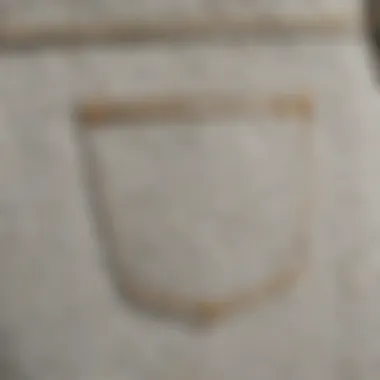
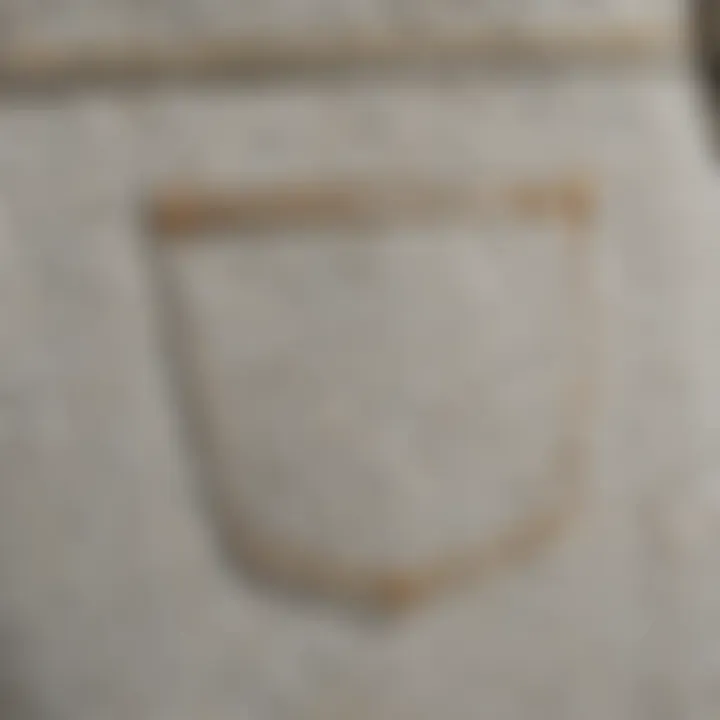
Intro
White Wrangler cowboy cut jeans command a distinct presence in both fashion and culture. They have an enduring popularity that goes beyond mere fabric and stitching. This article aims to dissect the myriad elements contributing to their timelessness. The examination will cover their historical underpinnings, unique features, and impact on modern fashion trends, particularly within agrarian communities.
Key Concepts and Terminology
Basic Definitions
To understand the appeal of white Wrangler cowboy cut jeans, it is essential to define key terms.
- Cowboy Cut: Refers to a specific style of jeans designed for comfort and movement, making them ideal for agricultural work.
- Denim Fabric: A sturdy cotton twill fabric, typically blue, but in this case evaluated in white for its distinct style.
Historical Context
The origin of Wrangler jeans dates back to the late 1940s when they were introduced as rugged workwear. The cowboy cut reflects a design ethos rooted in functionality, accommodating the needs of farmers and ranchers. Over the decades, these jeans transitioned into a symbol of Western heritage, appealing not only to those in rural settings but also to urban dwellers seeking a taste of authentic Americana.
Recent Innovations and Trends
Technological Advancements
Wrangler has embraced technological innovations that enhance the durability and comfort of their jeans. The introduction of techniques like stretch denim incorporates elasticity, offering freedom of movement that farmers require during strenuous activities.
Sustainable Practices
Eco-conscious initiatives are increasingly significant in the fashion industry. Wrangler promotes sustainable practices, such as using organic cotton and water-saving techniques in production. These advancements cater to a growing consumer base concerned about the environmental impact of their clothing choices.
Practical Applications and Techniques
Styling Versatility
White Wrangler cowboy cut jeans can be paired with various outfits, from casual tees to tailored shirts, making them suitable for both work and leisure. Their adaptability allows for seamless transitions between agricultural tasks and social engagements.
Care and Maintenance
To prolong the life of these jeans, proper care is essential. Here are some tips:
- Washing: Use cold water to maintain color.
- Drying: Air dry to prevent shrinkage.
- Storing: Fold instead of hanging to avoid stretching.
"Investing in quality clothing like Wrangler jeans pays off in long-term durability and sustainability."
Understanding how to maintain these jeans ensures they remain timeless and functional.
End
Wrangler cowboy cut jeans are more than just a piece of clothing; they symbolize a connection to agricultural roots and a commitment to innovation and sustainability. Their design is not only practical but resonates culturally with farmers and ranchers, as well as fashion enthusiasts. The blend of historical significance with modern advancements establishes their timeless appeal.
Prelims to Wrangler Cowboy Cut Jeans
The Wrangler Cowboy Cut Jeans hold a special place in the realm of denim fashion. This section aims to illustrate the significance of these jeans, especially focusing on their distinct features and their influence on both fashion and agriculture.
Wrangler, as a brand, has become synonymous with durable and functional denim. Cowboy Cut Jeans are not just a piece of clothing; they represent a cultural identity shaped by history, work, and tradition. Their importance extends beyond mere aesthetics; they embody practicality, style, and a lifestyle often associated with ranching and farming.
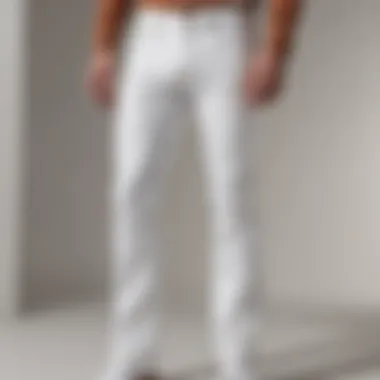

In examining the Wrangler Cowboy Cut Jeans, several aspects become apparent:
- Durability: Designed to withstand harsh conditions, these jeans are a staple for agricultural work.
- Fit: The unique cut allows for ease of movement, essential for both labor and casual wear.
- Style Versatility: Despite their rugged roots, they transition easily into casual and trendy fashion contexts.
The historical roots of Wrangler Cowboy Cut Jeans will be explored next, shedding light on how they became a timeless symbol of American work culture.
Historical Overview
The lineage of Wrangler Cowboy Cut Jeans can be traced back to the mid-20th century. Established in 1947, Wrangler focused on producing clothing that met the needs of cowboys and outdoor workers. The Cowboy Cut was designed specifically for those who needed functional, durable clothing while riding or working outdoors.
Initially, Wrangler's jeans catered to rodeo performers and ranchers, directly influencing their design. The jeans featured a high rise to accommodate a rider's posture and prevent wear from the saddle. This dedicated focus on functionality propelled Wrangler into the spotlight among its competitors. Over the years, the Cowboy Cut has maintained its essence while adapting to modern tastes.
Cultural Significance
The cultural importance of Wrangler Cowboy Cut Jeans cannot be overstated. They symbolize a connection to American heritage and the agricultural way of life. These jeans signify not only style but also a sense of belonging to a community that values hard work and simplicity.
Furthermore, the jeans have infiltrated popular culture, becoming a fashion statement worn by various celebrities and influencers. Their adaptability in different environments—from the barn to a casual coffee shop—demonstrates their influence beyond traditional agricultural settings.
In addition to their aesthetic appeal, Wrangler Cowboy Cut Jeans have been part of conversations about sustainable practices in fashion, resonating with consumers who care about the environment. This connection between sustainable fashion and denim is an integral part of ongoing discussions in our modern society.
By exploring both the historical context and cultural implications, one gains a deeper understanding of why Wrangler Cowboy Cut Jeans endure as a relevant choice for many, especially those within the agricultural sector.
Design Characteristics of Wrangler Cowboy Cut Jeans
The design characteristics of Wrangler Cowboy Cut Jeans are fundamental to understanding their enduring appeal. These jeans not only represent a style but also serve a practical purpose for agricultural work and daily wear. A keen examination of the distinct features reveals how they have triumphed in both fashion and functionality.
Cut and Silhouette
The cut and silhouette of Wrangler Cowboy Cut Jeans are tailored to fit the needs of those who wear them. The jeans offer a classic fit, designed to accommodate ample movement during physical activities, typical in agrarian lifestyles. The higher rise allows comfort when bending and reaching, essential for farmers and ranchers. It is not merely a matter of style; this cut serves an ergonomic function that enhances the wearer’s experience outdoors or in the barn.
Another aspect is the slim fit through the thigh and a straight leg from the knee down. This silhouette complements a variety of body types while maintaining a timeless appearance. It is a versatile design that lends itself well across different settings, whether for a day spent herding cattle or attending a local meeting.
Material and Fabric Technology
The fabric used in Wrangler Cowboy Cut Jeans plays a significant role in both comfort and performance. Typically crafted from 100% cotton denim, these jeans provide both breathability and a sturdy structure. However, advancements in fabric technology have introduced blends that enhance stretch, allowing for improved mobility without sacrificing durability. The incorporation of materials like spandex has made these jeans more suited for the demands of work and relaxation alike.
The dying process for white jeans is also critical, as it affects how the material wears over time. Special wash treatments allow these jeans to maintain their brightness while resisting stains, proving particularly advantageous for those working in fields or with livestock.
Durability and Longevity
Durability is a cornerstone of Wrangler’s reputation, especially in their Cowboy Cut Jeans. These jeans are constructed to withstand the rigors of agricultural life. Reinforced stitching and high-quality denim contribute to their strength, ensuring they can endure various conditions without compromising comfort.
Many users report that their jeans maintain integrity even after numerous washes, a testament to both the fabric and the construction methods utilized. The long lifespan of these jeans minimizes waste, aligning with growing demands for sustainability in fashion. Durable jeans not only offer value in terms of cost but also serve a greater environmental purpose, as they reduce the need for frequent replacements.
"Investing in quality jeans like the Wrangler Cowboy Cut leads to longer wear, less waste, and a more sustainable approach to fashion."
In summary, the design characteristics of Wrangler Cowboy Cut Jeans encapsulate both practicality and timeless style. This blend of functionality and aesthetic appeal makes them an enduring choice for those who appreciate both quality and a nod to tradition.
Styling White Wrangler Cowboy Cut Jeans
Styling white Wrangler cowboy cut jeans presents a versatile opportunity for fashion expression, blending practicality with aesthetic appeal. These jeans have transcended their utilitarian roots, establishing themselves as a staple in both casual and professional wardrobes. The importance of this section lies in understanding how these jeans can be adapted for various settings, ensuring comfort while making a style statement.
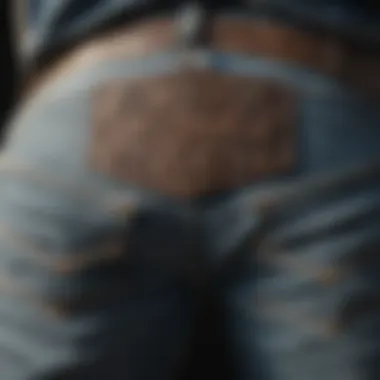
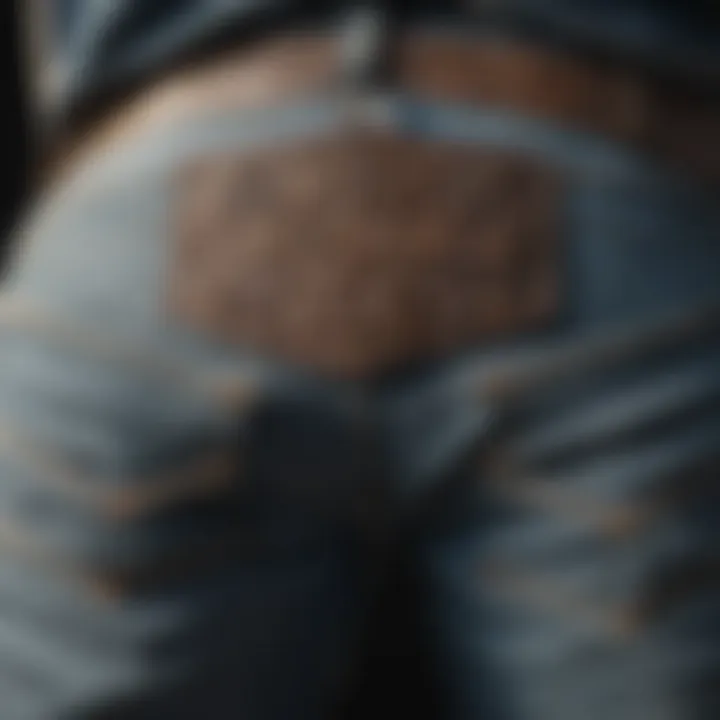
Casual Wear
When it comes to casual wear, white Wrangler cowboy cut jeans can be styled in numerous ways. They can be paired with a simple t-shirt or a classic button-down for a laid-back look. Footwear choices vary from sneakers to boots, enhancing the rugged yet refined appearance of the jeans. Accessories such as a leather belt or a simple watch can provide additional flair.
The light color of the denim offers a refreshing option during warmer months, while still being practical. Choosing coordinated colors helps create a cohesive outfit. Denim can also be layered with jackets or overshirts in complementary shades, adding versatility without sacrificing comfort.
Work Attire for Agricultural Settings
In agricultural settings, white Wrangler cowboy cut jeans play a crucial role for those in farming and ranching. The durability of the fabric withstands the rigors of outdoor work while allowing ease of movement. The classic fit of these jeans ensures they can be worn comfortably throughout a long day.
Farmers often appreciate the flexibility these jeans offer for bending and lifting. It is important to pair these jeans with durable work boots and functional shirts, creating a practical outfit that prioritizes safety without compromising on style. The white color, while somewhat unconventional for workwear, offers a fresh aesthetic that can distinguish a professional appearance.
Fashion Trends in Contemporary Contexts
Fashion trends today often favor a blend of vintage and contemporary styles, where white Wrangler cowboy cut jeans fit perfectly. Their traditional design incorporates modern twists, making them appealing to younger consumers while retaining a loyal base of classic denim enthusiasts.
In the current market, these jeans are increasingly seen in urban outfits, where they are often styled with graphic tees, oversized sweaters, and street-ready sneakers. They serve as a canvas for various fashion statements, adapting as wardrobe pieces from day to night. Moreover, their undeniable versatility demonstrates why they continue to resonate with fashion-forward individuals.
The enduring appeal of white Wrangler cowboy cut jeans lies not just in their fit, but in their capacity to adapt to diverse styles and contexts.
In summary, understanding the styling possibilities of white Wrangler cowboy cut jeans is essential for maximizing their potential in both casual and work environments. The adaptability of these jeans, combined with their timeless design, reflects their enduring value in contemporary fashion.
The Role of Denim in Sustainable Fashion
Denim has long been a staple in fashion. Yet, in recent years, it has gained recognition not just for its style, but also for its role in sustainable fashion practices. As consumers become increasingly aware of environmental issues, the demand for ethically produced denim continues to rise. This section explores the crucial role denim plays in sustainable fashion, especially focusing on sourcing practices and the environmental impacts associated with production.
Sustainable Sourcing Practices
Sustainable sourcing practices are vital to promoting environmentally friendly production methods in the denim industry. Brands like Wrangler have started to implement strategies to minimize the negative impact of their production processes. This includes using organic cotton, which is grown without harmful pesticides or fertilizers, reducing chemical runoff into the environment.
Moreover, sourcing denim locally can significantly cut down on carbon emissions from transportation. Historically, denim was often produced overseas, adding to its carbon footprint. By focusing on locally sourced materials and production, brands can support local economies while also maintaining a lower impact on the environment.
Another important practice is the recycling of materials. Wrangler has begun utilizing post-consumer recycled fibers in their denim. This not only gives new life to discarded materials but also lessens the reliance on virgin resources. Overall, sustainable sourcing in denim ensures that the product is not only stylish but ethically and environmentally responsible as well.
Environmental Impacts of Denim Production
The production of denim carries various environmental concerns, which necessitate a closer examination of its impact. Traditional denim manufacturing is notorious for its high water usage, often consuming thousands of liters to create just one pair of jeans. This raises concerns in regions where water scarcity is exacerbated by such practices.
Additionally, the dyeing process used to achieve that iconic blue can release harmful chemicals into local waterways. This pollution can disrupt aquatic ecosystems and harm communities reliant on clean water. Sustainable practices aim to mitigate these impacts through methods such as waterless dyeing techniques and closed-loop systems that recycle water used in production.
Furthermore, many denim brands are striving to minimize waste by adopting circular economy principles. This includes encouraging consumers to recycle their old jeans through take-back programs or designing denim items with a longer life cycle in mind.
"Sustainable fashion is not just a trend; it's a necessary evolution that recognizes the interconnectedness of our choices and the planet's health."
By understanding these environmental impacts, consumers can make more informed choices and choose denim products like white Wrangler cowboy cut jeans that align with their values. By prioritizing sustainability in denim, both producers and consumers contribute to a more equitable and environmentally friendly fashion industry.
Consumer Preferences and Market Trends
Understanding consumer preferences and market trends is essential in analyzing the ongoing success of Wrangler cowboy cut jeans, particularly the white variation. The denim market is continually evolving, influenced by cultural shifts, economic factors, and environmental considerations. When discussing Wrangler jeans, we see a blend of tradition and innovation that shapes these preferences.
Today, the customer base enjoying these jeans is diverse, which prominently affects marketing strategies. As younger consumers look for authenticity and heritage in their clothing choices, the appeal of Wrangler jeans remains strong. Many buyers appreciate the brand's western roots and connection to agricultural lifestyles, making the product not just clothing but a symbol of culture and tradition. Therefore, understanding who is buying these jeans provides insight into broader consumer behavior trends within the fashion industry.
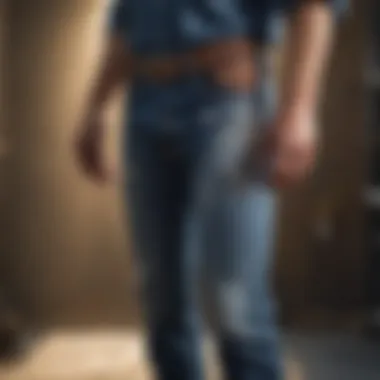

Demographics of Wrangler Jeans Buyers
Demographics play a crucial role in the market for Wrangler cowboy cut jeans. A mix of age groups and backgrounds contribute to the brand's appeal. Typically, the core audience includes:
- Farmers and Ranchers: These individuals wear these jeans for their practicality in tough environments. The rugged nature of cowboy cut jeans ensures they can withstand the demands of agricultural work.
- Fashion Enthusiasts: Many Millennials and Gen Z consumers seek vintage or classic styles, which gives the jeans an edge in urban fashion scenes.
- Working Professionals: Individuals in various trades favor these jeans for both their style and comfort.
This distinct blend makes it clear that Wrangler is not just selling jeans; it is offering a lifestyle. With growing online shopping trends, brands must adapt to target diverse demographics through digital platforms effectively.
Shifts in Consumer Attitudes Toward Sustainability
Recent years have seen a significant shift in consumer attitudes regarding sustainability, which impacts purchasing decisions. Modern customers increasingly prefer brands that demonstrate social responsibility and eco-friendliness. Wrangler has recognized this change and integrated sustainable practices into their production process.
The benefits of this focus on sustainability include:
- Recycled Materials: Using more environmentally friendly fabric sources appeals to eco-conscious consumers.
- Transparency: Customers are more inclined to support brands with clear supply chain practices, making them trust the product's origins.
- Durable Products: The inherent longevity of Wrangler's designs means less frequent replacements, appealing to a growing audience concerned about waste.
"Sustainabiility is not just a trend; it has become a principle in the purchasing behaviors of modern consumers."
Potential Future Developments in Wrangler Jeans
The landscape of fashion is ever-evolving, and Wrangler cowboy cut jeans are no exception. As consumer expectations shift towards sustainability and innovation, it is essential to examine the potential future developments of these iconic jeans. Addressing these elements is crucial for both the brand and the environmentally conscious consumer, especially with increased scrutiny on denim production processes.
Innovations in Fabric Technology
Technological advancements have a significant impact on the denim industry. Innovations such as waterless dyeing processes, organic fibers, and enhanced durability treatments are likely to become hallmarks of future Wrangler jeans.
A key focus area will be on using sustainable materials in manufacturing. For instance, fabrics made from recycled polyester or organic cotton not only reduce waste but also lower the carbon footprint associated with production. Additionally, advanced stretch technologies could offer better fit and movement, catering to the needs of consumers who prioritize comfort alongside style. Wrangler may also explore the incorporation of moisture-wicking and temperature-regulating properties to enhance the jeans’ performance in agricultural settings.
Adoption of Eco-Friendly Practices
As sustainability continues to shape consumer preferences, Wrangler is positioned to adopt eco-friendly practices in several ways.
First, enhanced transparency in the supply chain could foster trust among environmentally aware customers. This includes detailing the sourcing of raw materials and the manufacturing processes used.
Second, optimizing water and energy usage during production can have substantial environmental benefits. Utilizing eco-conscious methods not only addresses resource depletion but can also lead to cost savings in the long run for the brand. Further, collaborations with sustainable organizations may bolster Wrangler's commitment to environmental stewardship.
Finally, implementing take-back programs where consumers can return worn jeans for recycling will support a circular economy model. This approach not only prolongs the life cycle of denim but also helps to minimize landfill waste.
"Consumers increasingly prefer brands that align with their values, particularly regarding sustainability."
In summary, potential future developments in Wrangler jeans encompass a range of innovations in fabric technology and eco-friendly practices. These advancements are not just beneficial for the environment; they represent new opportunities for Wrangler to strengthen its market position and appeal to a more conscious consumer base, particularly those in the agricultural sector who often seek durable yet stylish workwear.
Finale
The exploration of white Wrangler cowboy cut jeans unveils not only a fashion statement but also a testament to cultural heritage and functional attire. The historical roots of these jeans illustrate their significant place in both the agricultural and fashion landscapes. Their design characteristics, particularly the cut and fabric technology, cater not only to aesthetics but also to practical needs of durability, which is especially relevant to agricultural work.
Final Thoughts on Wrangler Cowboy Cut Jeans
White Wrangler cowboy cut jeans stand as a symbol of versatility. They are suitable for various settings, from casual gatherings to tough agricultural environments. Their presence in popular culture reaffirms their status as more than mere clothing; they are a connector of generations and lifestyles. The unique color of white jeans adds a different dimension, allowing for more distinct styling choices while maintaining the rugged functionality that Wrangler is known for. Furthermore, loyal customers often express a sense of identity affiliated with their jeans, which contributes to their ongoing demand.
Implications for the Future of Sustainable Fashion Choices
The future of fashion is heavily leaning towards sustainability. Wrangler’s commitment to eco-friendly sources not only addresses environmental concerns but also resonates with a growing demographic aware of their purchasing decisions. Innovative practices in fabric technology are being developed, leading to increased longevity of garments without sacrificing style. Such trends indicate that future Wrangler products may increasingly reflect sustainability principles while still embracing the rugged, hardworking ethos of cowboy culture.
"Sustainability is not a trend; it's a commitment to improving our relationship with the environment through mindful choices in fashion."
In summary, understanding the complex relationship between style, culture, and sustainability will help consumers make informed choices. White Wrangler cowboy cut jeans are positioned well within this narrative, blending tradition with a forward-thinking approach.
By maintaining their relevance in both agriculture and contemporary fashion, Wrangler showcases the potential for denim to evolve while honoring its rich heritage regardless of the changing landscape of style.















